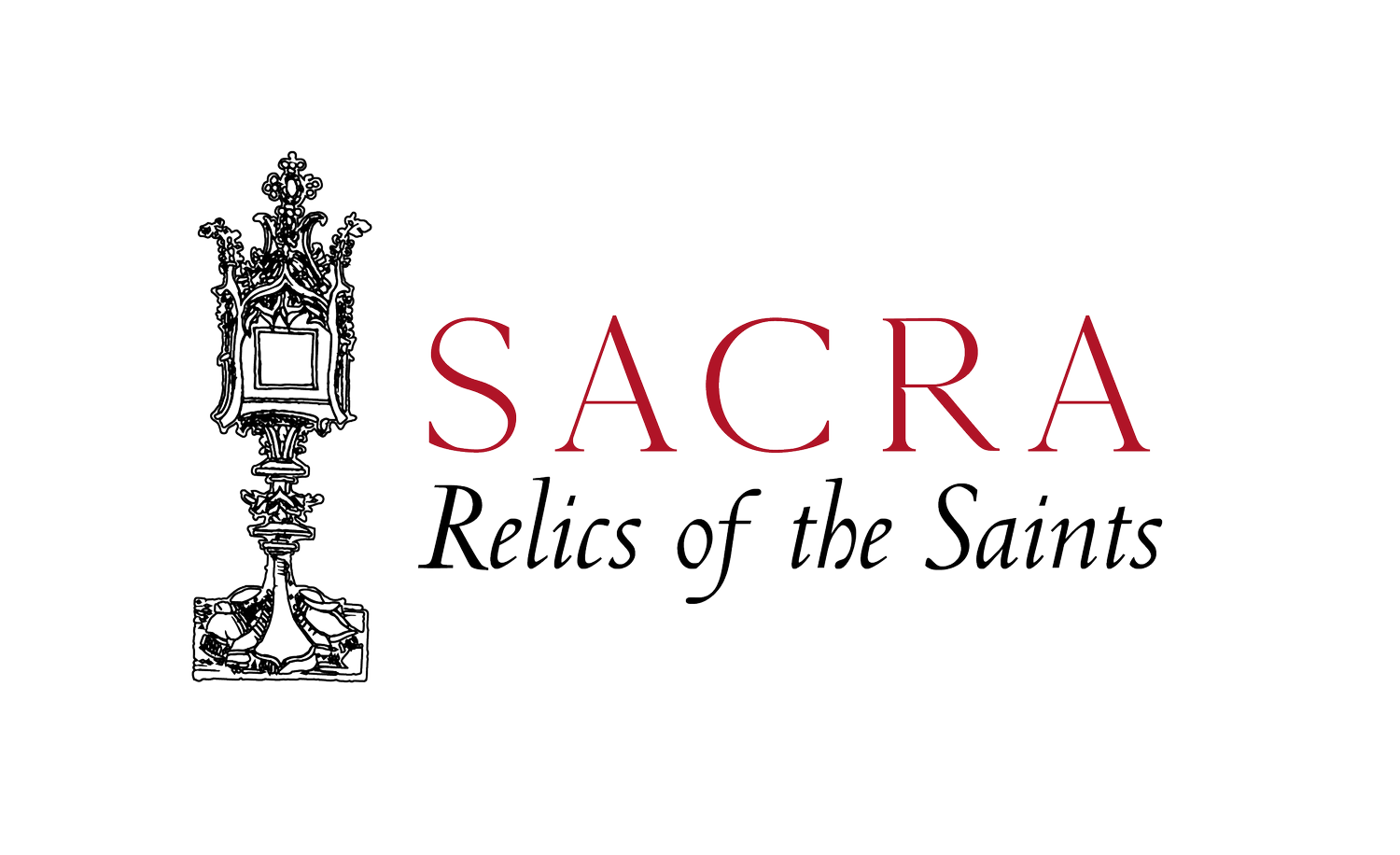How to use relics in the Sacred Liturgy
The saints are present at the Sacrifice of the Mass. We ask their intercession and commemorate their names, we recall their presence around the altar in the liturgy of heaven.
The Forerunners of Christ with Saints and Martyrs by Fra Angelico.
To honour the saints and invoke their prayers during the Mass, we can make use of their relics. Relics of the saints have always figured prominently in the public worship of the Church. We have already spoken about the relics in an altar stone [-LINK-}; here we shall make some suggestions about other ways relics can be used in the Sacred Liturgy.
Relics find their home near the altar on ‘gradines,’ the steps of the altar. When they are exposed for veneration, they should be flanked by lit candles. The relics are placed in standing reliquaries, which are ornate housings made of metal, wood, or stone that adorn the altar.
Reliquaries on the gradines of the altar. Also pictured is a mitre, a pointed hat vestment usually worn by a bishop.
Reliquaries are used on festal days, just as additional candles and flowers. Reliquaries, much like vestments, altar coverings, and other items associated with Divine Worship can be varied in size, material, and ornament to reflect the solemnity of the liturgy. These relics are incensed during the Mass.
An engraving from an old Missal, showing reliquaries on the altar and how to incense them.
If the altar does not have gradines, and creating them is impossible, a relic can be exposed on a plinth or covered table in a suitable place in the sanctuary. This is also flanked by candles, and an image of the saint could also be suitable.
A relic exposed for veneration at the Bournemouth Oratory.
Because of their festal character, relics of the saints are not used on the altar on penitential days and during seasons of penance. During these seasons, however, nothing excludes their exposition for a special devotion or to mark an occasion, on a separate altar, where Mass is not said, for this purpose.
A stunning example of a relic for exposition at a side altar during Lent. Photo: Canons Regular of St John Cantius
Relics may also be exposed on the altar during public recitation of the Divine Office, as at Mass. If Exposition of the Blessed Sacrament follows Mass or takes place during Vespers, the relics of the saints are removed (see our explanation in an article here {-LINK-}) before exposition, so that the Holy Eucharist is the sole focal point and centre of worship. In this case, relics can be conveniently removed by ministers during Holy Communion. If moving the reliquaries is impractical because of time or size, they can be veiled so that the relic inside the reliquary is hidden.
Exposition of the Blessed Sacrament. Relics on the altar are veiled before the Blessed Sacrament is exposed.
If the Mass concludes normally (without Exposition of the Blessed Sacrament), the faithful may want to venerate the relic of the saint of the day. After the Mass has concluded as normal (Father does not use the relic in lieu of the final blessing), the celebrant may give a general blessing from his place at the altar to the whole congregation, or he may give individual blessings to the faithful at the communion rail. He should enunciate some prayer of blessing, rather than blessing in silence. Where this is done, a minister could follow him a cloth (sacred linens such as purificators are not used) to clean the place on the reliquary where the faithful kiss or touch it to show their reverence. Relics of the True Cross have special treatment, which we shall cover in another article.
Since Mass has concluded, Father can choose to remove his chasuble and wear the stole in the colour of the day for this veneration. If the occasion is a more solemn one, or if a procession with the relic follows, he may opt to change into a cope.
The faithful venerate a relic of the True Cross. Photo: Institute of Christ the King Sovereign Priest.
If relics are not already part of the regular life of the parish, Father may explain how to venerate a relic, and give some explanation of the life of the saint. The sermon seems a natural place, but if Mass has concluded, nothing prevents him from some brief words immediately prior to the veneration. If this is an area generally new to the faithful, he might give a talk or host a catechesis event at the parish. He could do this himself, or even invite Sacra to give a lecture and answer questions about relics.
Image: Fr Lawrence Lew OP
Did you enjoy this article? For more information on how to use relics in the Sacred Liturgy, see our forthcoming book, A Vademecum of Relics in the Liturgy. This book compiles liturgical sources and ideas to use the relics of the saints in liturgical life.








